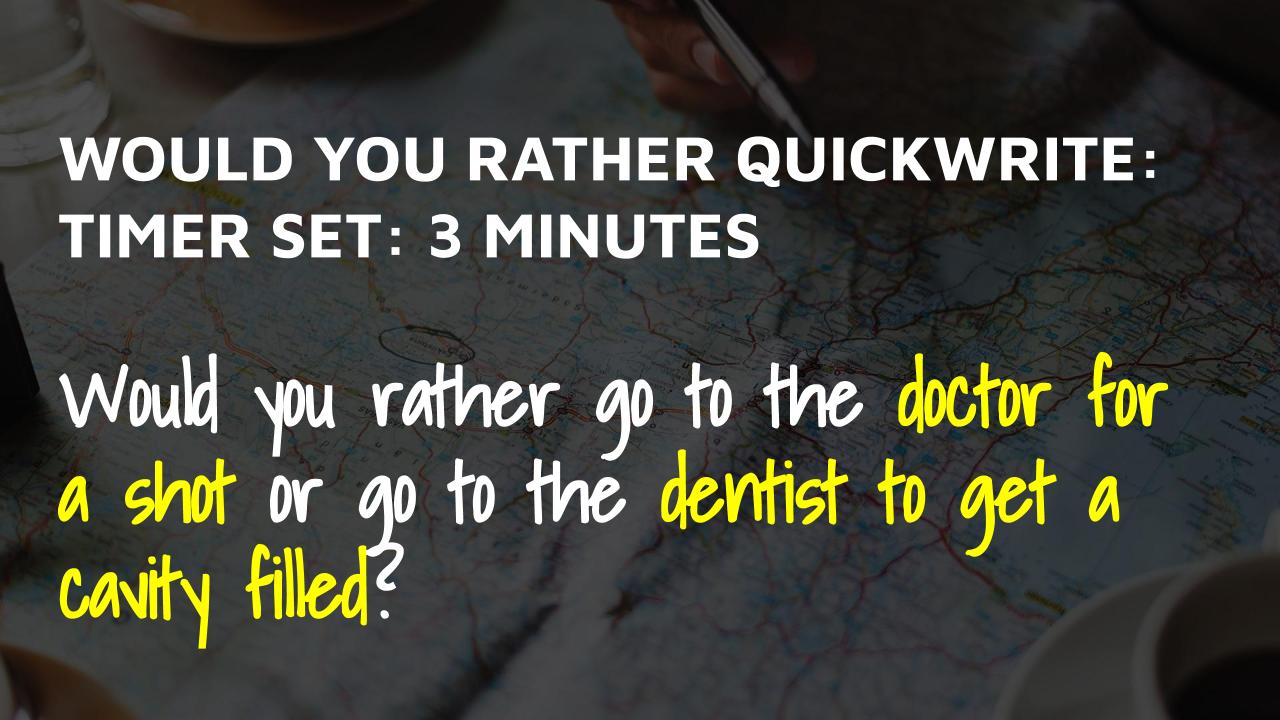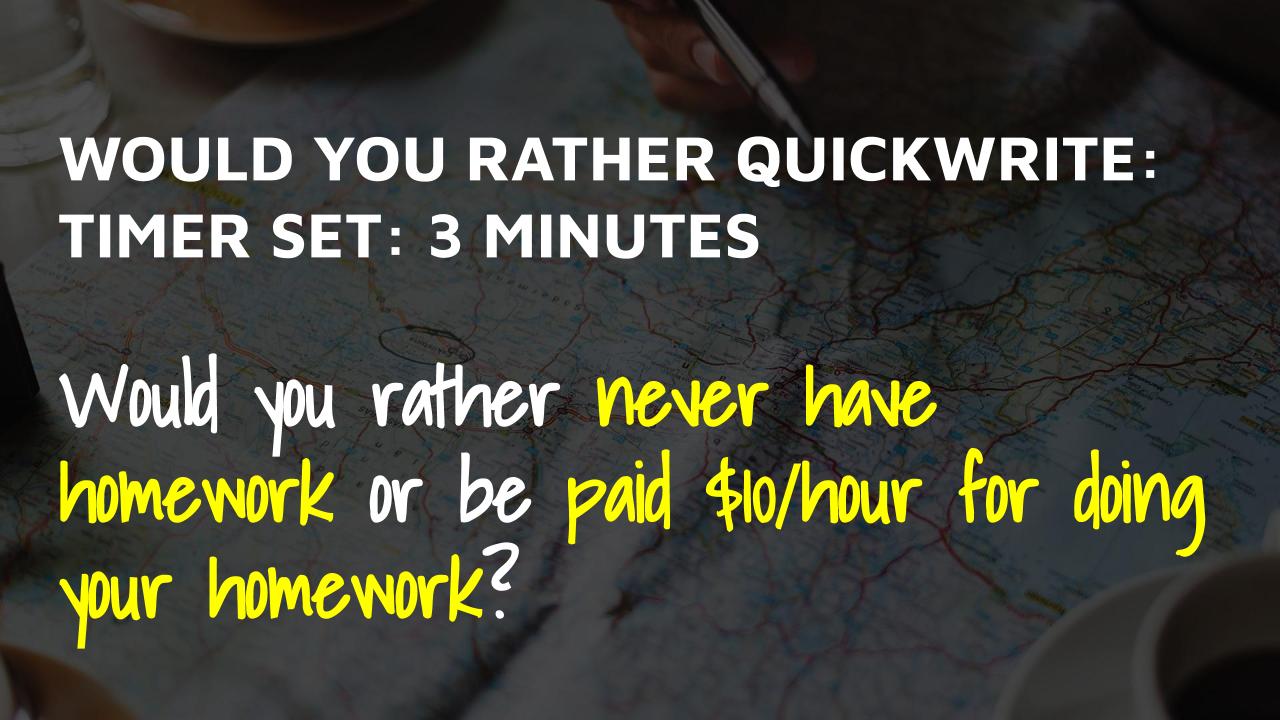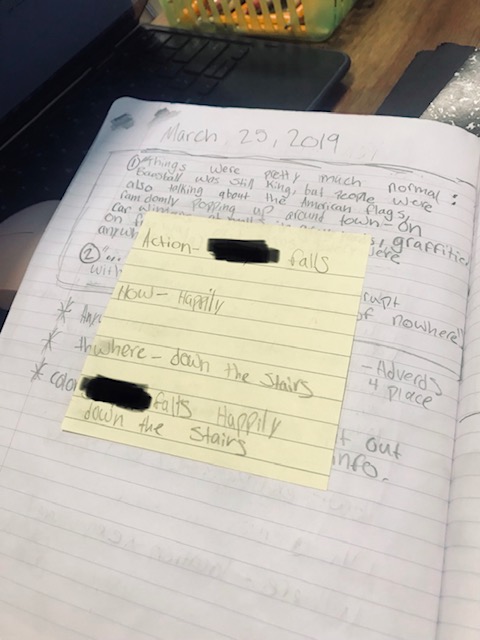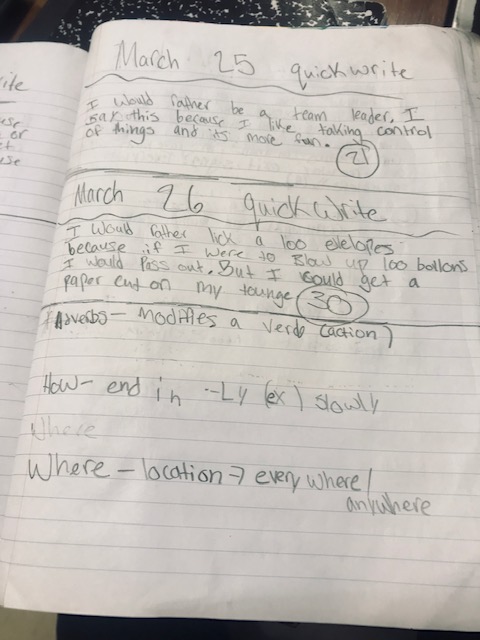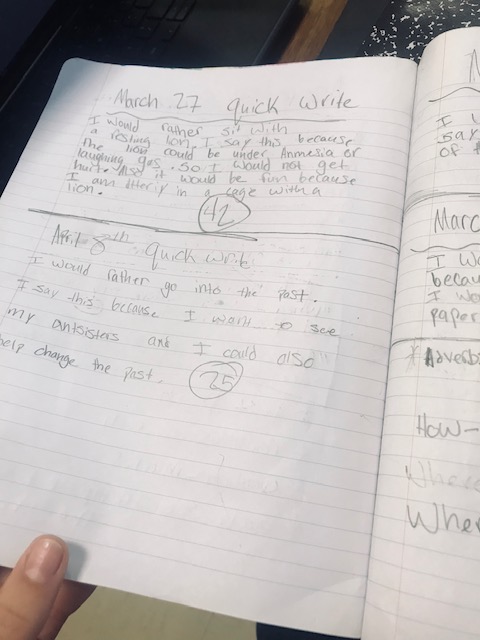The Power of Three-Minute Quick Writes
Hidden Possibilities in Three Minutes of Learning
Whether you call quick writes your warmup, a focused writing prompt, writing into the day, or simply timed writing, a quick write has a range of possibilities that are just plain cool and useful in the English classroom. I adhere to the definition that Linda Reif uses in her book The Quickwrite Handbook: 100 Mentor Texts to Jumpstart Your Students' Thinking and Writing: “A quick write is a first draft response to a short piece of writing…” (3). Linda Reif uses other authors’ writing to spark ideas, but in my opinion, it can also be in the form of a question or another prompt to get students thinking. The three-minute quick write as a strategy is not new. It is a technique that published authors use, screenwriters, and classrooms young and old. This post is designed to help you revisit an old strategy and maybe weave in some new techniques to freshen it up a bit. If you are preparing the fall, it may be a perfect time to revisit your classroom weekly teaching routine.
The timing of three minutes is on purpose. It is just long enough to have a moment to think, but not enough time to really have a ton of delay that could cause disruptions in the classroom. I often will be able to put my response in my notebook and warn them just in time that they have a minute and a half left. The timing of this is “enough” time that it is not obtrusive to other activities in a day’s lesson plan. Think short and sweet, but just urgent enough that students will not have much time for hesitation in getting ideas down on paper.
Paper Notebooks vs. Digital Notebooks
With the transition to online learning, you may want to consider using digital notebooks. There are some really great free templates available at SlidesMania’s website where you can download the template, and then edit it to make the notebook exactly what you want for your class. While I am a person who personally prefers and needs to handwrite my ideas down on a physical page, I also see the benefit of a digital option. For my families that won’t be able to grab composition notebooks for online learning, this option is free and available through the Google Classroom. I can take a digital notebook template and assign each student a copy. Then, as part of my back-to-school routine, I can teach students how to add pages and text. I also am excited about having them digitally decorate the front covers of their notebooks during the first few weeks of school with Google images. This will get rid of all of those magazine cutouts and packaging tape that we use to decorate paper composition notebooks at the beginning of the year.
Prompt vs. No Prompt
The next step is to decide whether or not to use a prompt. The beauty of the quick write is that you are asking your reader to put their opinions or ideas down on the page in a relatively speedy manner. I have gone the no prompt route where I give them think time to just write. Sometimes this is problematic because they are pulling ideas out of their own writer databases. What if I am still building my writer database? I find that older, more mature writers really appreciate no prompts.
Now me personally, I love prompts at any age, especially for my striving writers because I then can help them frame their answer. I also adore quick writes when they ask, “Would You Rather” questions or when they ask the reader to come up with something narrative or fictional on the spot. I find these responses to be the most personal and the most likely to create a space of “author sharing” in the classroom. Nothing like a good divide with a “Would You Rather” question to get people talking. I will often insert a personal anecdote here to help my students get to know me better as well (Ask about the one with the flu shot). This shows them that their teacher is a human as well as a writer.
Other ideas for prompts might include charts, graphs, articles, art pieces, pictures, and more. I am also going to try weekly motivational prompts that include example problems, weird fun facts to learn, and things to research. One of my favorite ways I have seen the use of quick writes is again in Linda Reif’s The Quickwrite Handbook: 100 Mentor Texts to Jumpstart Your Students' Thinking and Writing. She uses a mentor text to help students with the noticing stage of quick writes, and she also helps students take a quick write and develop that idea into a full piece of writing. I have been loving my mentor text work in past years, but also know I can struggle with helping students with the noticing stage of writing. I have started to compile a list of noticing sentence stems to help me help my younger writers that constantly want to notice capitals, periods, and quotation marks because that is what they are familiar with so far in their writing careers. I want it on the front of my mind the different ways we can notice writing, so I am constantly thinking about how I can phrase probing questions with the six-traits of writing. Helping to build student vocabularies when it comes to noticing writing is one of the main purposes of my mentor text work.
Call-to-Focus
Struggling with behavior or classroom management? A quick write calms everything down as students are called to focus on an idea. I often will post the “get ready” prompt on the board and have students prepare their notebooks. Then, we are ready to take off when the class starts. I use a timer. I recommend you use a timer that is visual on the board when the quick write begins. While the usage of a timer can create anxiety in students, for the most part, this anxiety is a good thing. I have had some students in the past that cannot handle the timer aspect of anything on the board, and I reassure them that they can take as many moments past the posted time as needed.
Stress is not always a bad thing. This process teaches our students to make decisions and get started in a timely fashion. Sometimes I observe students that are taking forever to write. There isn’t a sense of urgency. However, I then watch the same students come to life under the positive notions of stress that perhaps only a deadline can invoke in a writer. The deadline just happens to be in three minutes. Even if I have a student that sits and stares out of the window, I can still verbally ask them their decision to a would you rather question or what they think. They often comply verbally. I will often take their response and make a sentence starter out of what they said on their paper. Almost always, I don’t end up with blank notebooks.
Write With Them
The most powerful writing teachers write with their students. Yes, I am also purposeful when I say powerful because writing teachers have the hardest and most unbelievable job. We teach how to get a voice on the page. This being said, something that weakens our power is when we take the “birds-eye” view to writing time and walk around the room. We are tempted to do this because of classroom management skills tell us to move closer to our students. Proximity. However, I often will take my journal and move it around the room. I can also find a table to sit at with my students. Writing with them shows them that not only do you care to answer the question or use the time to write, but in turn, you also care that they see you writing. I want my students to know I am a reader and a writer. It also encourages an air of competition through word count.
Count the Words
My co-teacher put me on to this strategy. She uses it for some of her diagnostic tests regarding writing where students work on word count numbers and stamina. I didn’t expect this part to be so powerful. After students finish writing and I finish writing, we count our words together. You wouldn’t be surprised how many students have the sole purpose of writing that day to just beat me in my word count. Kids love competition. Let us not forget that whenever we introduce a gaming aspect to our classrooms we key into a part of our students that love to play…and they love to beat me at my word count.
This process also establishes a tangible goal for those students that have trouble focusing on the purpose of a given strategy. My favorite response was from my co-teacher when she stated, “Today, go back into your notebooks and see how many words you usually do...then try to beat it.” Students went back into their notebooks and then proceeded to smash their word count records out of the ballpark. They are so proud when they tell you this; however, I also like to use examples where I demonstrate being more passionate about a topic over another one. I like to tell them, “Today, I had so much to say about the prompt! Look at how much I wrote” or “Today, I didn’t really connect to the prompt, but I still tried.” Either way, I welcome whatever is put on the page as a great first draft response to an idea.
Edit in Real-Time
I almost always show a mistake I made on purpose. Someday they are going to catch on to their English teacher who keeps making mistakes. I do this to show them that mature writers edit their writing and go back and reread what they wrote on the page. I get a lot of students in the sixth-grade who have been trained for completion. While we want students to complete assignments, we want them to create awareness as writers, and we want to keep perfecting their writing abilities. Writing isn’t about who gets it done the fastest. Writing is about who is comfortable with their own writing through revision and editing.
Share Ideas
The best part about quick writes is the sharing of ideas! I will often have students get up and move to one side of the room to the other to show who voted for what side of the prompt. This is also a great opportunity for a think-pair-share as students can high-five and team up with a friend to share what they wrote down. Whether I am doing this sharing as a whole group response, I always get volunteers to tell me their opinion. Remember, our students don’t naturally want to push us away, but we have to ask them what they think, believe, and feel.
Bonus: Teacher Morning Pages
A three-minute quick write is more than a strategy you can use in class. If you are struggling to get your writing time each day, start your day or end your day with a three-minute quick write. I often use no prompt for this and simply just let my mind dump information. Sometimes I have to dump for a moment in order to get to the creative stuff going on in my brain, but it is needed to get the 26 other small to-do list items out on the page in my journal where they can be organized. Then I can write poems and blog posts and dream.
I follow Megan Minns and her blog. She recently posted an awesome post about morning and evening routines. She also put up another post on how to write when tired. Both of these apply to teachers. I compare the three-minute quick write idea to the start of a diet plan. How many diet plans have I failed because I have aimed for 75 oz of hydration, 6 days of working out, and a brand new diet? Only one thing at a time. Then count your pile of accomplishments. In high school, I read Anne Lamott’s Bird By Bird: Some Instructions on Writing in Life. In the book, her brother waited all summer to do a big project on birds. The advice her dad gave? 'Bird by bird, buddy. Just take it bird by bird.'"
Take your writing words one at a time. Minute by minute. Second by second.

